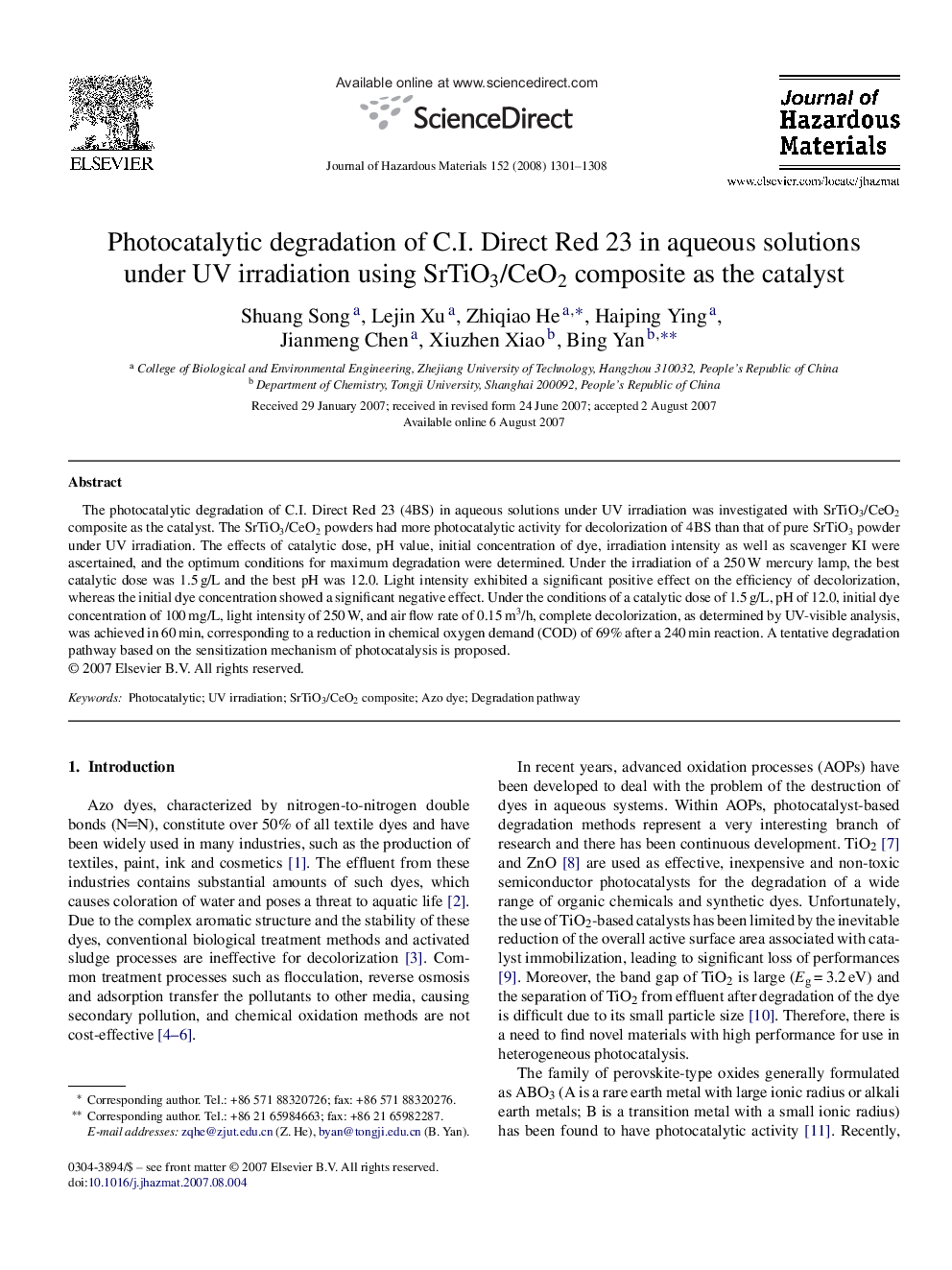| Article ID | Journal | Published Year | Pages | File Type |
|---|---|---|---|---|
| 583762 | Journal of Hazardous Materials | 2008 | 8 Pages |
Abstract
The photocatalytic degradation of C.I. Direct Red 23 (4BS) in aqueous solutions under UV irradiation was investigated with SrTiO3/CeO2 composite as the catalyst. The SrTiO3/CeO2 powders had more photocatalytic activity for decolorization of 4BS than that of pure SrTiO3 powder under UV irradiation. The effects of catalytic dose, pH value, initial concentration of dye, irradiation intensity as well as scavenger KI were ascertained, and the optimum conditions for maximum degradation were determined. Under the irradiation of a 250Â W mercury lamp, the best catalytic dose was 1.5Â g/L and the best pH was 12.0. Light intensity exhibited a significant positive effect on the efficiency of decolorization, whereas the initial dye concentration showed a significant negative effect. Under the conditions of a catalytic dose of 1.5Â g/L, pH of 12.0, initial dye concentration of 100Â mg/L, light intensity of 250Â W, and air flow rate of 0.15Â m3/h, complete decolorization, as determined by UV-visible analysis, was achieved in 60Â min, corresponding to a reduction in chemical oxygen demand (COD) of 69% after a 240Â min reaction. A tentative degradation pathway based on the sensitization mechanism of photocatalysis is proposed.
Related Topics
Physical Sciences and Engineering
Chemical Engineering
Chemical Health and Safety
Authors
Shuang Song, Lejin Xu, Zhiqiao He, Haiping Ying, Jianmeng Chen, Xiuzhen Xiao, Bing Yan,
